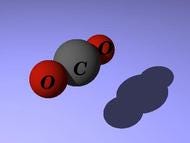Originally published here.
Social Cost of Carbon: The social cost of carbon (SCC) is an estimate, in dollars, of the economic damages that would result from emitting one additional ton of carbon dioxide into the atmosphere.
The SCC is a highly malleable and deeply flawed climate change policy tool. The selection of values for future emissions, climate sensitivity, expected damages, discount rates, etc. can produce an order of magnitude difference in the calculated SCC.
The SCC is not based on actual, documented damage caused by incremental carbon dioxide emissions, but is an estimate of potential future damage which might result from such emissions.
“Estimates of the SCC are calculated in four steps using specialized computer models.
Step 1: Predict future emissions based on population, economic growth, and other factors.
Step 2: Model future climate responses, such as temperature increase and sea level rise.
Step 3: Assess the economic impact that these climatic changes will have on agriculture, health, energy use, and other aspects of the economy.
Step 4: Convert future damages into their present-day value and add them up to determine total damages.
These four steps are completed to obtain a baseline value for the damages of emissions.”
The federal government is required to perform cost/benefit analysis as a component of regulatory analysis. However, based on the above definition and procedure, no analysis is performed regarding the benefits of incremental carbon dioxide emissions ,which are both real and current as opposed to potential and projected. NASA has documented significant global greening over the past 35 years and attributes 70% of this greening to CO2 fertilization resulting from increased atmospheric CO2 concentrations. Research has also attributed a significant percentage of the increase in field crop productivity to CO2 fertilization; and, has determined that plants also use available water more efficiently in a CO2 enriched atmosphere, making them more drought tolerant. These represent major benefits of increased atmospheric CO2 concentrations.
A major challenge in assessing potential future damage resulting from increased CO2 emissions is the absence of current damage from the atmospheric CO2 increases which have already occurred. There is no documented damage resulting from the modest increase in global average near surface temperature which has already occurred, supposedly as the result of increasing atmospheric CO2 concentrations. The documented increase in global mean sea level began prior to any significant potential impact from increased atmospheric CO2 concentrations and has continued at a consistent pace since.
According to the IPCC, there is little or no confidence that the modest warming generally attributed to increased atmospheric CO2 concentrations has had any impact on the frequency, intensity or duration of weather events including tropical cyclones, tornadoes, floods, droughts, heat and cold waves and wildfires.
The predicted massive, climate change driven migration has not occurred, nor has the submersion of Pacific islands or low-lying coastal regions. In fact, most Pacific islands have gained area in the face of rising sea levels.
Indur M. Goklany has stated that the increased atmospheric CO2 concentration has been a net benefit to society and will remain so for the foreseeable future.



The "hottest day on record" is a frequent scare tactic, inspired by the remarks of the first IPCC Chair, Sir John Houghton, who said "If we don't announce disasters, nobody will pay attention." The "yada yada yada on record" tactic is an example of Mark Twain's "Lies, damned lies, and statistics." The thermometer was invented in 1753. In 1850, temperatures were being routinely recorded at exactly one place in the Southern Hemisphere: Jakarta. Surface records were (and are) notoriously unreliable. So the "record" extends back to 1979, when NASA launched satellites that measured tropospheric temperature profiles with worldwide coverage. At no time since 1753 have Vikings been growing barley and raising sheep in Greenland. So the "hottest day on record" is an intentional lie.
CO2 composed 2,500 parts per million (ppm) in the atmosphere 150 million years ago. Because marine creatures and plants combine it with calcium to make bones and shells, which ultimately become limestone, it has declined on an essentially straight line, at 14.6 ppm per million years, to 280 ppm in 1750. Plants die at 150 ppm. The Earth was scheduled to die in about nine million years. Fortunately, the Industrial Revolution has raised it to 415 ppm, extending the Earth's lease on life to 18 million years. Reducing CO2 emissions is *exactly* the *wrong* thing to be doing. Read "Fake Invisible Catastrophes and Threats of Doom" by Dr. Patrick Moore.
The "panel" part of IPCC is a pack of liars, composed of two political appointees from each of the UN's 193 member governments. The chapter lead authors and editors for the Scientific Annexes are chosen by full-time political UN staff. The Summary for Policymakers must be approved line by line, behind closed doors, by the Panel. The chapter editors, and the Panel, have many times either inverted or buried scientists' conclusions. Prof. Richard Lindzen (MIT, Meteorology) resigned after they suppressed 15 findings in the chapter for which he was the lead author, and the manuscript had been approved by the other 27 chapter authors -- and he's not the only one. Read Chapter 3 of "Where Will We Get Our Energy" at http://vandyke.mynetgear.com/Whence-Energy.html
"In fact, most Pacific islands have gained area in the face of rising sea levels." How is this seeming paradox possible?